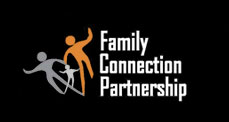|
 BULLYING BULLYING
What is bullying? (back to top)
1. Any willful attempt or threat to harm or
hurt another person.
2. Any physical act which would give someone
reason to fear or expect harm.
3. Harassment, intimidation or threats which are
verbal, written or physically directed.
Did you Know? (back to top)
• As cell phones and other use of social media have increased
so has the trend of using them to hurt (bully) others.
• 50% of all teens have been victims of cyberbullying.
• 40% of teens have been bullied on-line. Online bullying occurs
more often among girls. Boys who bully tend to bully face to face.
• Only 10% told a parent and only 18% of those 10% were reported
to Law Enforcement.
• It’s important for anyone who feels like they are being bullied in
any way to report it to a parent or teacher. If it’s happening at school,
talk to a teacher or staff member who in turn is obligated to report it.
• Those who are doing the bullying need to understand that there are
serious and perhaps legal consequences for their actions.
• Hurtful words, name calling, teasing and threats do
hurt…some have even lost their lives over it!
If you have been a victim of bullying or have been a part of doing the bullying it is important to know that school systems and communities are actively working together to put an end to it! New laws (Senate Bill 250) will require every local Board of Education to have policies in place that prohibit bullying and it should be included in the Student Code of Conduct for middle and high schools.
A Thin Line: Sexting, textual harassment and
cyberbullying (back to top)
The Web and Cell phones help us communicate, connect and learn in ways we never could before, but
they’ve also forever changed how we interact with
others. Things we used to share in person – and in
private – can now be broadcast to thousands,
instantly. Sometimes we type things we would never
say to someone’s face. As a result new issues like
forced sexting, textual harassment and cyberbullying
have emerged, which now affect a majority of young
people in the U.S.
MTV’s A Thin Line campaign was developed to empower you to identify, respond to, and stop the spread of digital abuse in your life and amongst your peers. The campaign is built on the understanding that there’s a “thin line” between what may begin as a
harmless joke and something that could end up having serious impact on you or someone else. We know no generation has ever had to deal with this, so we want to partner with you to help figure it out. Onair, online and on your cell, we hope to spark a conversation and deliver information that helps you draw your own digital line. www.athinline.org | 

 BULLYING
BULLYING